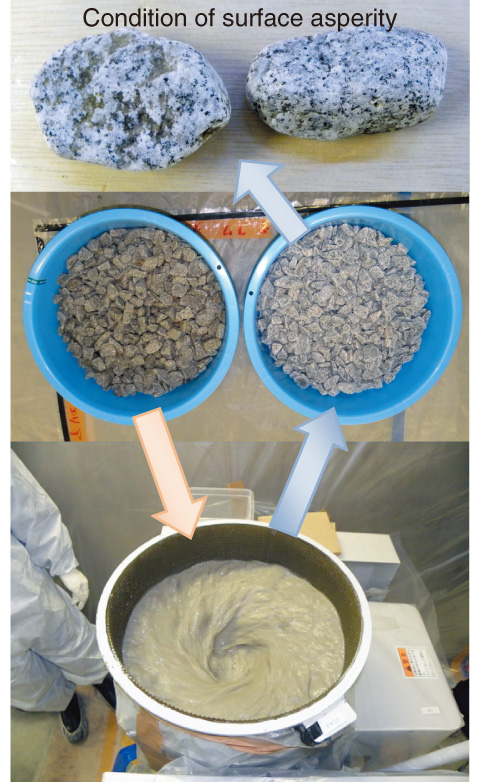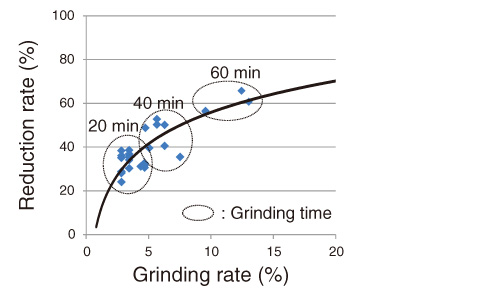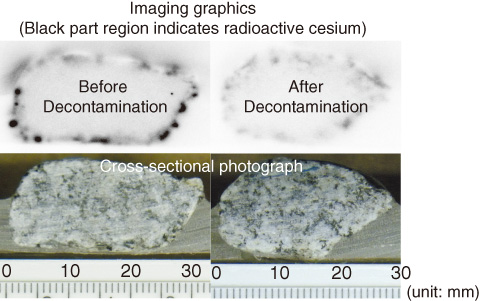
Fig.1-8 Decontamination test by milling method

Fig.1-9 Relationship between grinding rate and reduction rate

Fig.1-10 Distribution state of radioactive cesium before and after testing
In houses and public facilities, gravel (pebbles, etc.) with radioactive cesium (Cs) is laid on. To reduce the air dose rate, the gravel is stripped and led to waste. Gravel with low-level contamination is reused after high-pressure water washing to remove fine-grained soil attached to its surface. Considering the high price of gravel compared to that of crushed stone and the need for waste reduction, an effective method of decontaminating gravel with high-level contamination is expected to be selected.
Surface grinding of gravel has the potential for producing a strong decontamination effect. Therefore, we tried to find an effective procedure for decontaminating gravel by rubbing it against itself using a milling method in which the grinding time and amount of water added are varied.
We observed the condition of gravel during and after the test and confirmed that the surface of the gravel was ground properly (Fig.1-8). However, in this test, there were no ground parts on the concave regions of the gravel because the milling was done with only gravel and water, without grinding material.
The test results were as follows. When the grinding time was 20 min, the mean grinding rate was about 4%, and the mean reduction rate of the surface dose rate was about 37%. Furthermore, when the grinding time was 60 min, the mean grinding rate was about 10%, and the mean reduction rate of the surface dose rate of the gravel was about 60% (up to 66%). Both of these rates were low for these grinding times (Fig.1-9).
To confirm the cause of the low reduction rate, we observed the distribution of Cs in the gravel before and after decontamination using an imaging plate (IP). By comparing the observation of a cross-section of gravel (granite) that was sliced in half and imaging graphics obtained with the IP (Fig.1-10), we confirmed that the Cs was mostly attached to the black mica around the surface of the gravel and penetrated slightly below the surface.
In this test, we used gravel that had been laid on heavily in the garden and rooftop of Rifure-Tomioka. It took considerable time to grind the gravel because it was slightly harder than the gravel that was bought for a mock test. Furthermore, the reduction rate became lower than expected because the gravel contained mica, which tended to absorb Cs. Various types of gravel are laid on in houses. The color, shape, size, and hardness of the gravel vary, so we must select reasonable conditions for decontamination work. On the basis of the result of this test, we will research decontamination methods and conditions for reusing gravel and reducing waste.